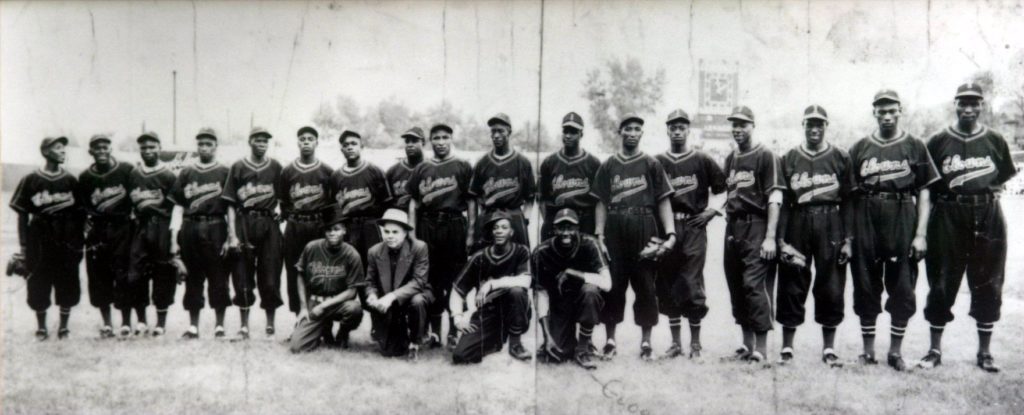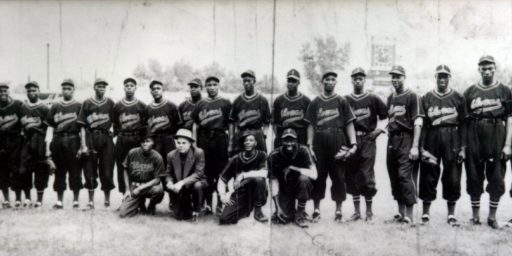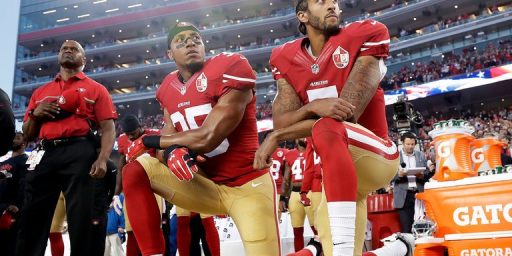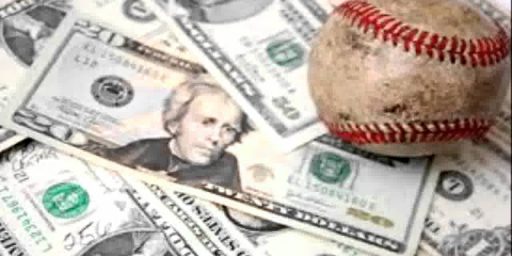MLB Recognizes Negro Leagues as a Major League
A long overdue--and complicated---recognition.

On the hundredth anniversary of the Negro League, Major League Baseball is recognizing them as a fellow major league. Aside from symbolism, this will mean a change to the record books.
The Ringer‘s Ben Lindbergh has a long feature on the matter titled “MLB Is Finally Recognizing the Negro Leagues as the Major Leagues They Always Were.” Some highlights:
“All of us who love baseball have long known that the Negro Leagues produced many of our game’s best players, innovations, and triumphs against a backdrop of injustice,” MLB commissioner Rob Manfred said in a statement provided by the league. “We are now grateful to count the players of the Negro Leagues where they belong: as major leaguers within the official historical record.”
Negro Leagues players and historians have advocated for reclassification for decades. As Hall of Famer James Thomas “Cool Papa” Bell once said, “The Negro Leagues was a major league. They wouldn’t let us play in the white leagues and we [were] great ballplayers in the Negro Leagues, so how can you say we [weren’t] major league?” In the decades after the 1970 publication of Robert Peterson’s influential book about Black baseball, Only the Ball Was White, researchers such as John Holway and Larry Lester led painstaking efforts to assemble comprehensive statistics from long-buried box scores.Last year, a collection of Negro Leagues scholars and researchers published a book of essays called The Negro Leagues Were Major Leagues, which laid out the strong statistical and ethical case for inclusion.But until 2020—when the 100th anniversary of the founding of the Negro Leagues coincided with sweeping societal protests of racial injustice and an abbreviated, jury-rigged MLB regular season—MLB hadn’t considered the subject.
This isn’t the first time the record has been changed in this way:
The causes of the long delay aren’t much of a mystery. As we detailed in August, the exclusion of the Negro Leagues from the official list of major leagues stemmed from the findings of MLB’s Special Baseball Records Committee, which commissioner William Eckert convened in 1968 as part of the preparations for the landmark Macmillan Baseball Encyclopedia. In 1969, the all-white, five-man body bestowed major league status on six circuits, including some (such as the 1884 Union Association) whose level of play was far lower than that of the Negro Leagues. But because of the prejudices of the day, the SBRC didn’t even discuss the candidacy of the Negro Leagues.
The SBRC’s ruling remained in effect until today’s announcement, which MLB’s forthcoming press release acknowledges is “long overdue.” For years, the SBRC’s stated standards for major league classification made the chances of reconsideration for the Negro Leagues seem tenuous. In assessing candidates’ qualifications, the committee considered factors including scheduling irregularities, inconsistent playoff formats, the frequency of unofficial games and uncompleted campaigns, media coverage, ballpark capacity, player skill level, and the number of crossover former or future AL or NL players. In recent years, more historians have noted that the Negro Leagues’ shortcomings in those areas were largely products of the racism that spawned segregated leagues in the first place, and that to exclude them on the basis of barnstorming, inconsistent schedules, or a lack of coverage would doubly penalize already-ostracized players for hardships that white baseball authorities imposed.
The existence of the pandemic-altered 2020 season—which, of course, counted as “major league”—made it harder to defend the exclusion of the Negro Leagues on account of scheduling quirks or a lack of consistency in format. MLB’s centennial celebrations of the Negro Leagues, conducted amid swelling public support for the Black Lives Matter movement and national demonstrations against police violence and structural racism, only made it more glaring that the league was still snubbing those past players by neglecting to sanction their status as major leaguers. Those circumstances gave rise to a rapid reappraisal.
Now, I’m dubious that the inclusion of a pandemic-shortened season for an organization that’s been incredibly organized and systematic for nearly two centuries is a reasonable justification for including an always-haphazard league into the statistics. But, certainly, the fact that it was haphazard precisely because of the reasons that it existed is a fair point. And very much bolstered in my mind by this:
There’s plenty of precedent for revisions to major league stats; early AL/NL record keeping could be spotty, and even high–profile figures have been subject to change. “Some fans were upset when the hit totals for Cap Anson, Eddie Collins, and Honus Wagner—or the win totals for Cy Young, and Walter Johnson and Christy Mathewson—changed, but history is process, not product,” says Thorn. Lester is bracing for blowback. “It’s going to create a firestorm before it is accepted,” he says, adding, “The cynics and naysayers will claim that these stats are not valid. Which is OK—it creates more work for me, and I’m ready for the challenge.”
There are all manner of decisions that have to be made and many of them are detailed in the piece. But this in particular interests me:
He’s also ready for single-game or single-season feats to garner greater recognition. “We’re going to have all these no-hitters by Satchel Paige and Smokey Joe Williams and Andy Cooper and Willie Foster and Hilton Smith and Leon Day now as part of the record book,” Lester says. “Instead of saying Bob Feller pitched the only opening day no-hitter—well, he did in modern baseball in the American League. But Leon Day also pitched an opening day no-hitter in the Negro League. So I want to see Leon Day placed on that pantheon next to Bob Feller. He achieved the same extraordinary event, just in different leagues.”
Lengthening the list of no-hitters is an easy call, but MLB will face stickier situations when it comes to single-season rate stats. Fans are accustomed to citing Ted Williams, who batted .406 in 1941, as the last .400 hitter, but Hall of Famer and Homestead Grays great Josh Gibson batted .441 in 1943, and Artie Wilson batted .431 in 1948, albeit in a shorter season. Gibson’s 1943 mark would edge out Hugh Duffy’s .440 in 1894, which currently leads the all-time list.
Gibson amassed his stats that season in fewer than 80 games, but Thorn favors treating it like any other individual major league season that clears the long-established playing-time minimum for batting-title qualification of 3.1 plate appearances per team game. “The idea of having white major league records and an additional line for Black major league records will be very tough for me to accept,” he says, citing the “separate but equal” overtones and the similarity to an ill-conceived (and eventually abandoned) plan to display the plaque of Satchel Paige, the first Hall of Famer from the Negro Leagues, in a separate section of the museum. MLB’s press release states that the league and Elias “have begun a review process to determine the full scope of this designation’s ramifications on statistics and records,” and that the two entities “will work with historians and other experts in the field to evaluate the relevant issues and reach conclusions upon the completion of that process.”
Honestly, there’s going to have to be a dual-entry system for some of these statistics. We’ve long had National League and American League records; adding Negro League records can be done in the same way. Opening Day is opening day; there are just two or three instead of one or two.
But the season stats are simply a different thing entirely. It’s one thing to count hits and runs and strikeouts into a player’s statistics. But it’s rather silly to pretend that averages achieved over 80 games are comparable to those achieved over 148 or 162 (indeed, the whole * thing with Roger Maris’ breaking Babe Ruth’s single-season home run record never went away).






It’s gonna be messy, and contentious, but it’s long overdue.
But it’s even sillier to pretend that the circumstances surrounding those different length seasons were the same for both.
@OzarkHillbilly:
Sure. Ultimately, we’ll never know what it would have been like had there been no segregation in baseball. Presumably, some Negro League stars would have dominated in the Majors and, indeed, some white stars might have not even become stars. There’s just no way of knowing.
Again, I’m more comfortable with things like home runs, steals, strikeouts, and other individual achievements simply being lumped together. It’s not a perfectly comparable stat—so much so that we don’t even know in which direction to adjust. But season stats are just a different thing altogether. There, we should just have AL/NtlL/NgL stats separately. (I don’t think we merged NL and AL stats until fairly recently.) Indeed, doing otherwise actually erases a lot of Negro League records.
There’s also that the competition level in the Negro Leagues could be very uneven. There’s no question that the best teams and best players were comparable to the majors. But the worst teams were far worse and more disorganized (mostly due to circumstances beyond their control). The 19th century was *kinda* like that, but not quite as much. But the changing rules and uneven competition is why 19th century stats have long been considered different than 20th century stats.
Maybe, but there again we run into the “separate but equal” mess. Like I said, it’s gonna be messy and contentious. I figure someday it will become so normalized that people will argue over it all just like they do now over home runs/steals/strikeout rates/etc. in the different eras.
A bit nonsensical to fans of the game like me who don’t obsess over stats.
Or just tag them with an asterisk when they appear in the lists and point out they were over a smaller number of games. Otherwise I can see getting into a similar ding-dong over what weight should be used for the calculation to make them equivalent to the AL/NtlL stats.
Also would be appropriate for a paragraph of explanation to be given at the bottom, explaining why the Negro Leagues were unable to play the same number of games per season.
Anecdote:
When I was 19 or 20, my mom got a gig job, sewing for a woman in Pasadena, which wasn’t far from our house in Highland Park. My mom didn’t drive, so I had to drive her and wait for her. It was a lower middle class neighborhood, not a good area, with the typical mix of homes, many rundown. One house stood out though, because it was immaculate. While only a small two bedroom home, the lawn was perfect, the paint was always nice, the hedges perfectly clipped. It was obviously well, well taken care of. An elderly African American man was always working on the house. Every time I went with my mom, he was out there, working on something.
Well, given I had a few hours to kill, I introduced myself, and each time I went with my mom, I would wander over to his and make small talk, and help him. I’d hold the ladder, hand him a brush, put stuff in the trash, etc. We chatted. His name was Matthew, but everyone called him “Mack”. Nice man. It wasn’t until about 6 months later that he casually mentioned that he had won a silver medal in the 1936 Olympics, and that his brother played pro baseball for a while.
Literally, that’s what he said. I’ll never forget it how nonchalantly he said “Yeah, even though I won a medal in 36 at the Olympics, my little brother played pro baseball for a few years. He was the real star of the family”.
I went to the library and looked up the 1936 Olympics. Mack won a silver medal in the 200 meters, behind Jesse Owens. His last name: Robinson. His little brother: Jackie Robinson.
I continued to visit him, and run errands for him, for several years. He was a nice man.
@EddieInCA:..I continued to visit him, and run errands for him, for several years. He was a nice man.
You never know what being a decent human being will lead to.
Good on ya’…
@EddieInCA: I love stories like this.
For baseball geeks, the Strat-o-Matic Company has done a lot of work collecting and analyzing the records of Negro League players in order to include them in their computer baseball game. They base their judgements on Negro league records plus any numbers they have on performances in winter leagues in Cuba, which often included MLB stars, and was considered to be very close to MLB in level of play. HOFer Johnny Mize once commented that while playing in Cuba, the hitter ahead of him sometimes got intentional walks. Mize said “They were walking him to get to me. And I thought I had a pretty good year.” The stories of Ty Cobb’s humiliations in Cuba are part of baseball lore. Old time baseball is such a fascination subject. MLB was definitely not the only game in town.